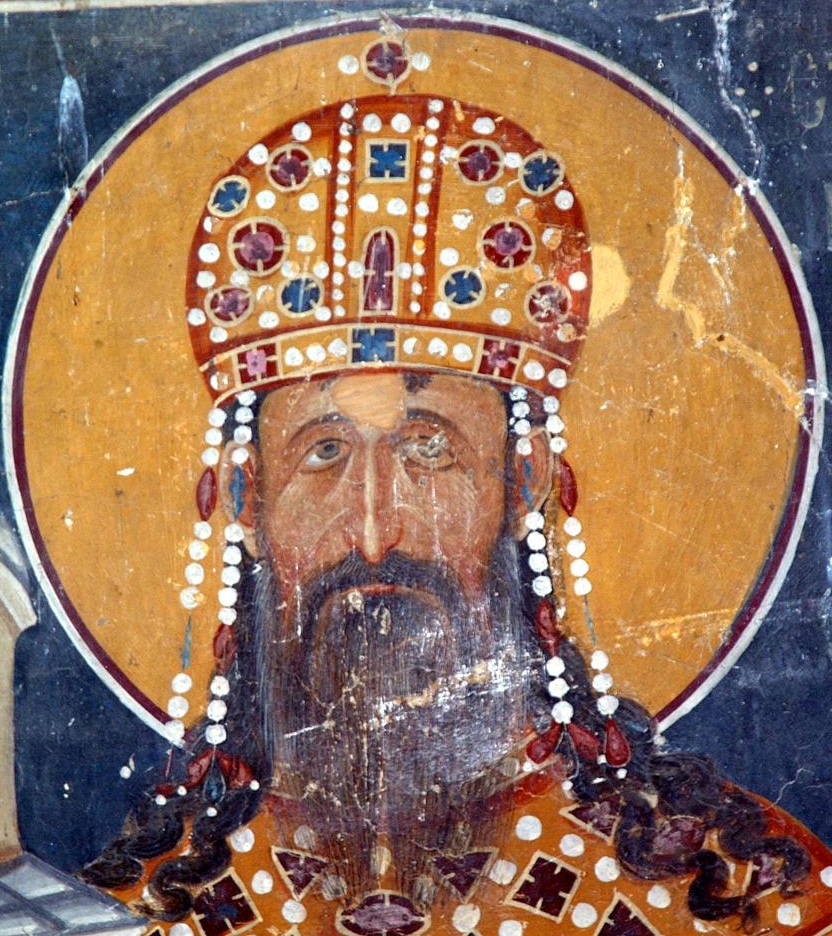|
St. Stephen Chrysobull
The St. Stephen Chrysobull () or Banjska Chrysobull (Бањска хрисовуља/Banjska hrisovulja) was a Golden bull, chrysobull, charter, issued in 1314–1316 by Serbian king Stefan Milutin (r. 1282–1321). It was held at the Banjska monastery founded by Milutin. It is currently held at the Topkapi library in Istanbul. The Chrysobull describes in detail the expansion of estates which King Milutin gifted to the settlements of Ibar, Sitnica, Laba, in Ras, Hvosna, Plava, Budim, Zeta, and others. It also includes a special section by the name of "Law of Vlachs" which covers the regulations of Vlach cattle breeder obligations on that manor. After the Battle of Kosovo in 1389, the Ottomans pillaged Milutin’s endowment and took the charter in the process, which has been kept in Constantinople since the second half of the 15th century, in the sultan's treasury of Old Saraj. The appearance of the charter St. Stefan’s Chrysobull had been preserved in its original form—a ... [...More Info...] [...Related Items...] OR: [Wikipedia] [Google] [Baidu] |
Serbian Language
Serbian (, ) is the standard language, standardized Variety (linguistics)#Standard varieties, variety of the Serbo-Croatian language mainly used by Serbs. It is the official and national language of Serbia, one of the three official languages of Bosnia and Herzegovina and co-official in Montenegro and Kosovo. It is a recognized minority language in Croatia, North Macedonia, Romania, Hungary, Slovakia, and the Czech Republic. Standard Serbian is based on the most widespread dialect of Serbo-Croatian, Shtokavian (more specifically on the dialects of Šumadija–Vojvodina dialect, Šumadija-Vojvodina and Eastern Herzegovinian dialect, Eastern Herzegovina), which is also the basis of Croatian language, standard Croatian, Bosnian language, Bosnian, and Montenegrin language, Montenegrin varieties and therefore the Declaration on the Common Language of Croats, Bosniaks, Serbs, and Montenegrins was issued in 2017. The other dialect spoken by Serbs is Torlakian dialect, Torlakian in south ... [...More Info...] [...Related Items...] OR: [Wikipedia] [Google] [Baidu] |
Franz Miklosich
Franz Miklosich (, also known in Slovene as ; 20 November 1813 – 7 March 1891) was a Slovenian philologist and rector of the University of Vienna. Early life Miklosich was born in the small village of Radomerščak near the Lower Styrian town of Ljutomer, then part of the Austrian Empire, and baptized ''Franz Xav. Mikloschitsh''. He graduated from the University of Graz with a doctor of philosophy degree. Career He was a professor of philosophy at the University of Graz. In 1838, he went to the University of Vienna, where he received a doctor of law decree. During his studies, he became influenced by the works of the Slovenian philologist and linguist Jernej Kopitar. He abandoned law, devoting most of his later life to the study of Slavic languages. In 1844, he obtained a post at the Imperial Library of Vienna, where he remained until 1862. In 1844, he published a review of Franz Bopp's book ''Comparative Grammar,'' which attracted attention from the Viennese academic ci ... [...More Info...] [...Related Items...] OR: [Wikipedia] [Google] [Baidu] |
14th-century Documents
The 14th century lasted from 1 January 1301 (represented by the Roman numerals MCCCI) to 31 December 1400 (MCD). It is estimated that the century witnessed the death of more than 45 million lives from political and natural disasters in both Europe and the Mongol Empire. West Africa experienced economic growth and prosperity. In Europe, the Black Death claimed 25 million lives wiping out one third of the European population while the Kingdom of England and the Kingdom of France fought in the protracted Hundred Years' War after the death of King Charles IV of France led to a claim to the French throne by King Edward III of England. This period is considered the height of chivalry and marks the beginning of strong separate identities for both England and France as well as the foundation of the Italian Renaissance and the Ottoman Empire. In Asia, Tamerlane (Timur), established the Timurid Empire, history's third largest empire to have been ever established by a single conqueror. S ... [...More Info...] [...Related Items...] OR: [Wikipedia] [Google] [Baidu] |
Medieval Charters And Cartularies Of Serbia
In the history of Europe, the Middle Ages or medieval period lasted approximately from the 5th to the late 15th centuries, similarly to the post-classical period of World history (field), global history. It began with the fall of the Western Roman Empire and transitioned into the Renaissance and the Age of Discovery. The Middle Ages is the middle period of the three traditional divisions of Western history: classical antiquity, the medieval period, and the modern period. The medieval period is itself subdivided into the Early Middle Ages, Early, High Middle Ages, High, and Late Middle Ages. Population decline, counterurbanisation, the collapse of centralised authority, invasions, and mass migrations of tribes, which had begun in late antiquity, continued into the Early Middle Ages. The large-scale movements of the Migration Period, including various Germanic peoples, formed new kingdoms in what remained of the Western Roman Empire. In the 7th century, North Africa and the ... [...More Info...] [...Related Items...] OR: [Wikipedia] [Google] [Baidu] |


